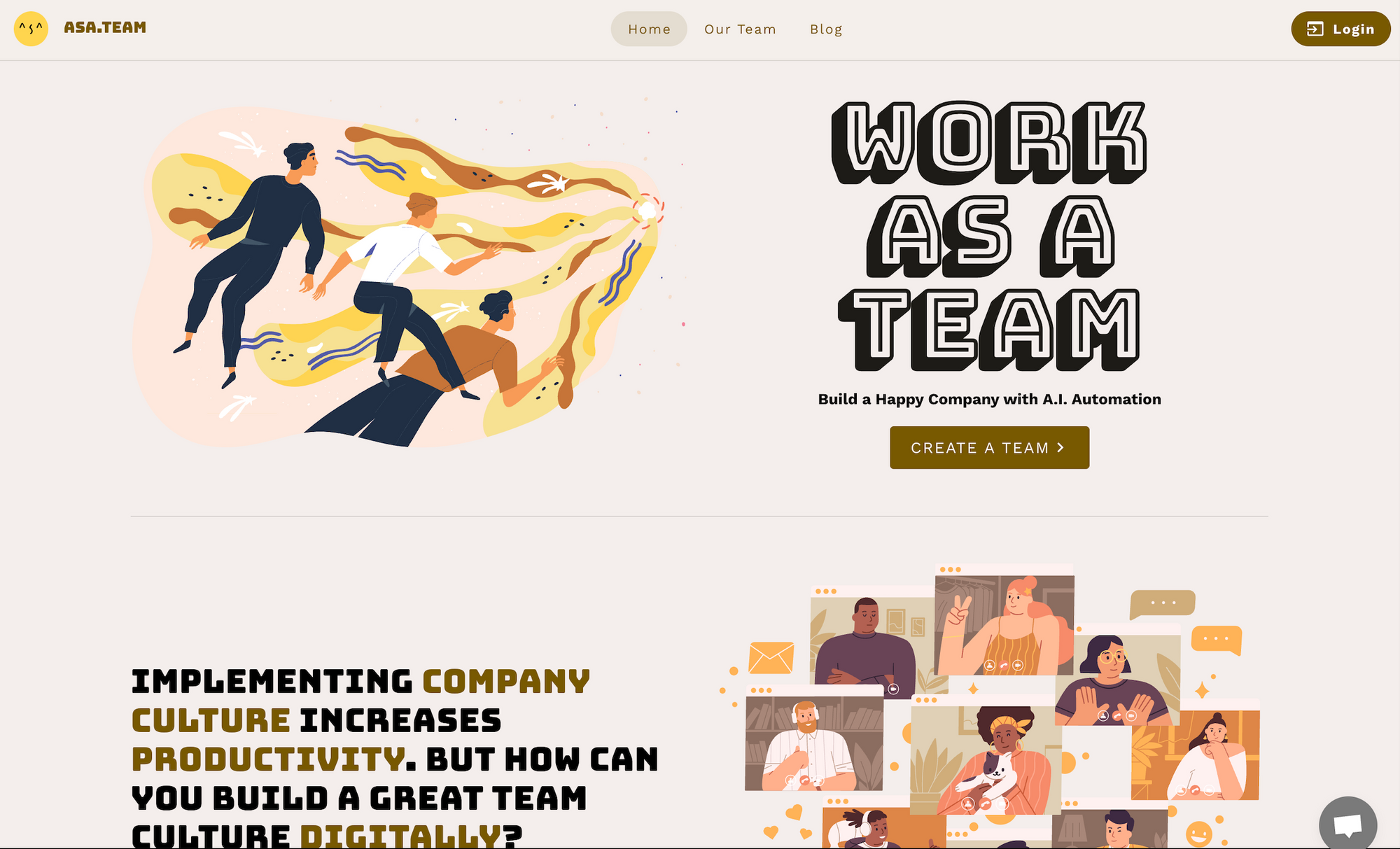5 Ways To Maintain A Productive Workforce

In today's ever-evolving business landscape, the vitality of maintaining a productive workforce has never been more paramount. As organizations grapple with market fluctuations, technological advancements, and increasing competition, the ability to harness and improve employee productivity stands as a cornerstone for sustainable success.
The concept of enhancing workforce productivity transcends mere efficiency; it encapsulates a holistic approach to nurturing a driven, engaged, and high-performing team. This endeavor not only impacts the bottom line but also plays a critical role in fostering a healthy organizational culture that can withstand the tests of time and change.
At the heart of this pursuit lies an undeniable truth: effective management coupled with sincere engagement initiatives can significantly uplift an organization's productivity.
Thus, through the lens of this narrative, we will embark on an exploration of five key strategies designed to enhance workforce productivity, demonstrating how thoughtful leadership practices can transform potential into excellence.
This exploration seeks to not only illuminate pathways to improved performance but also to inspire a reimagined approach to how we engage and empower our most valuable asset—our people.
The Vitality of Workforce Productivity

The significance of workforce productivity in achieving business goals cannot be overstated. It's the backbone of any thriving business, providing a clear path to operational excellence, customer satisfaction, and ultimately, profitability. Workforce productivity measures how efficiently and effectively a team utilizes its resources to achieve the company's objectives. In today's highly competitive and ever-evolving business landscape, honing in on ways to maximize this aspect of your operation is crucial.
Currently, there's a palpable shift in trends within workforce management, with a growing emphasis on employee engagement strategies. In the past, priorities might have leaned more towards the quantitative aspects of HR tasks. However, contemporary approaches recognize the importance of qualitative elements, such as employee satisfaction, well-being, and engagement.
This paradigm shift is driven by data underscoring the direct correlation between engaged employees and heightened productivity. Companies are now investing in fostering a positive work environment, offering continuous learning opportunities, and ensuring work-life balance to keep their teams motivated and focused.

Amidst this shift, workforce management software such as ASA has emerged as a pivotal tool in streamlining operations and bolstering productivity. These digital solutions automate various HR tasks, from scheduling and time tracking to performance monitoring, thereby reducing manual workload and minimizing errors.
More importantly, they provide invaluable insights into workforce dynamics, enabling leaders to make data-driven decisions that enhance operational efficiency and employee engagement. By integrating such software into their operations, businesses can adapt more swiftly to market changes, better align their workforce with their strategic goals, and create a sustainable foundation for growth and innovation.
Establish Clear Goals and Expectations

Establishing clear goals and expectations is paramount to fostering a productive work environment. By defining achievable goals for employees at both individual and team levels, you lay down a roadmap toward success, offering a sense of direction that is essential for motivation and focus.
Moreover, effective communication of these expectations is crucial. It helps in aligning the employees' efforts with the organization's objectives, thereby enhancing their engagement and dedication. In today's digital age, utilizing workforce management software has become a game-changer.
Such platforms allow for the seamless tracking of progress against set goals and facilitate the provision of regular feedback. This not only helps in recognizing achievements and addressing areas of improvement in a timely manner but also promotes a culture of transparency and continuous development. By incorporating these strategies, organizations can significantly boost productivity and foster an environment of accountability and growth.
Foster a Culture of Communication and Collaboration

In today's fast-evolving business landscape, fostering a culture that prioritizes communication and collaboration stands as a cornerstone for innovation, efficiency, and employee satisfaction.
By emphasizing open communication channels, organizations empower their members to freely share ideas and provide constructive feedback, fostering a rich environment of mutual growth and innovation. Implementing collaborative tools and platforms further enhances this culture by facilitating seamless teamwork and knowledge sharing, breaking down silos that often hinder productivity and creativity.
Moreover, the adoption of employee engagement strategies plays a critical role in building a truly communicative work environment. Such strategies ensure that all members feel valued and heard, motivating them to actively contribute to collective goals and embrace the collaborative ethos of their organization.
Ultimately, investing in these areas not only accelerates project timelines and improves outcomes but also cultivates a supportive and dynamic workplace culture that attracts and retains top talent.
Provide Learning and Development Opportunities

In today's fast-paced and ever-evolving business landscape, investing in the learning and development of your workforce is not just an option; it's a necessity. By initiating structured training programs, companies can significantly upskill their employees, ensuring they are not only proficient but also ahead of the curve in their respective fields.
This investment in employee growth fosters a culture of empowerment and shows a firm’s commitment to its workforce’s future. Beyond formal training, the integration of mentorship and coaching programs can offer personalized guidance, helping individuals navigate their career paths more effectively and reach their utmost potential. This hands-on approach to professional development is invaluable, facilitating a more engaged, competent, and confident employee base.
The benefits of such a focus extend beyond mere skill enhancement. Continuous learning and development opportunities are key drivers of employee engagement and productivity. They signal to the workforce that their employer values their growth and is willing to invest in it, leading to a more motivated and committed team.

Employees who feel their workplace offers ample opportunities for professional growth are likely to be more satisfied, more engaged in their work, and, ultimately, more productive. This, in turn, translates to higher quality work, innovation, and a competitive edge for the organization.
Thus, by prioritizing learning and development, businesses not only enrich their employees' careers but also reinforce their own success and sustainability in the marketplace.
Prioritize Work-Life Balance

In today's fast-paced work environment, prioritizing work-life balance has become more crucial than ever. A healthy work-life balance acts as a protective barrier against burnout and plays a significant role in uplifting employee morale. By promoting this balance, organizations not only show a commitment to the well-being of their workforce but also lay the groundwork for a more engaged and productive team.
Implementing flexible work arrangements is a practical approach to accommodating employees' personal needs, enabling them to manage their professional and personal responsibilities more effectively. This flexibility reflects a modern understanding of work, where quality overshadows quantity, and the well-being of employees is seen as integral to achieving long-term success.
Furthermore, there is a growing body of evidence supporting the notion that the well-being of employees directly impacts overall workforce productivity. When individuals feel valued and their work-life balance is respected, they are more likely to be motivated, perform better, and contribute positively to the organizational goals, creating a win-win scenario for both employees and employers alike.
Recognize and Reward Performance

In the contemporary workplace, acknowledging and celebrating achievements through a performance recognition system is instrumental in maintaining high spirits and encouraging continuous improvement among employees.
Implementing such a system not only fosters a culture of appreciation but also significantly boosts morale. Furthermore, offering incentives and rewards acts as a powerful motivator, pushing employees to excel beyond their regular duties. This motivation not only enhances individual performance but also contributes to the overall success of the organization.
Summary
In summary, the five pivotal strategies for nurturing a productive workforce encompass flexible working arrangements, ongoing skills development, recognition and rewards, fostering a culture of communication, and investing in technology for efficiency.
These approaches not only empower employees to perform at their best but also play a critical role in enhancing overall job satisfaction and commitment. The quintessence of employee engagement intertwined with astute workforce management cannot be overstated; it's the lifeline of organizational productivity, driving businesses towards their zenith of success.
Cultural shifts towards valuing and implementing these strategies are imperative for organizations aiming to thrive in the modern business landscape. This discourse beckons a compelling call to action for companies: to ardently prioritize and embed these strategies within their core operations for sustained success. Embracing these practices is not merely an option but a strategic imperative to foster an environment where productivity flourishes and businesses prosper.

